
Caravaggio Painting Reproductions 2 of 4
1571-1610
Italian Baroque Painter
79 Caravaggio Paintings
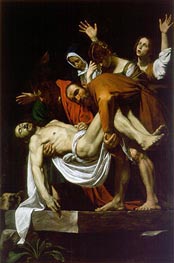
The Entombment (Deposition) c.1602/04
Oil Painting
$6102
$6102
Canvas Print
$61.93
$61.93
SKU: CMM-2792
Michelangelo Merisi da Caravaggio
Original Size: 300 x 203 cm
Pinacoteca, Vatican, Vatican City
Michelangelo Merisi da Caravaggio
Original Size: 300 x 203 cm
Pinacoteca, Vatican, Vatican City
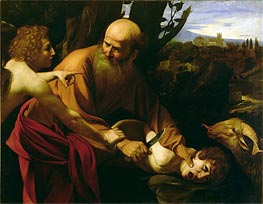
The Sacrifice of Isaac c.1603
Oil Painting
$4963
$4963
Canvas Print
$72.66
$72.66
SKU: CMM-2793
Michelangelo Merisi da Caravaggio
Original Size: 104 x 135 cm
Galleria degli Uffizi, Florence, Italy
Michelangelo Merisi da Caravaggio
Original Size: 104 x 135 cm
Galleria degli Uffizi, Florence, Italy
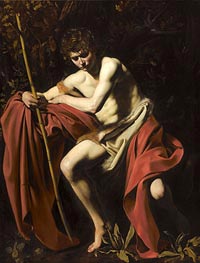
Saint John the Baptist c.1603/04
Oil Painting
$3961
$3961
Canvas Print
$118.62
$118.62
SKU: CMM-2794
Michelangelo Merisi da Caravaggio
Original Size: 173.4 x 132.1 cm
Nelson-Atkins Museum of Art, Kansas City, USA
Michelangelo Merisi da Caravaggio
Original Size: 173.4 x 132.1 cm
Nelson-Atkins Museum of Art, Kansas City, USA
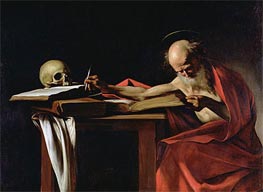
Saint Jerome Writing c.1604/06
Oil Painting
$3373
$3373
Canvas Print
$68.24
$68.24
SKU: CMM-2795
Michelangelo Merisi da Caravaggio
Original Size: 112 x 157 cm
Galleria Borghese, Rome, Italy
Michelangelo Merisi da Caravaggio
Original Size: 112 x 157 cm
Galleria Borghese, Rome, Italy
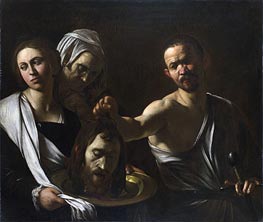
Salome Receives the Head of John the Baptist c.1607/10
Oil Painting
$3840
$3840
Canvas Print
$78.79
$78.79
SKU: CMM-2796
Michelangelo Merisi da Caravaggio
Original Size: 91.5 x 106.7 cm
National Gallery, London, UK
Michelangelo Merisi da Caravaggio
Original Size: 91.5 x 106.7 cm
National Gallery, London, UK
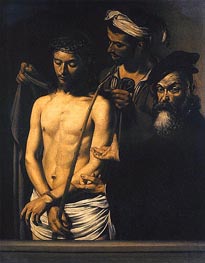
Ecce Homo 1605
Oil Painting
$3784
$3784
Canvas Print
$75.21
$75.21
SKU: CMM-2797
Michelangelo Merisi da Caravaggio
Original Size: 128 x 103 cm
Galleria di Palazzo Rosso, Genoa, Italy
Michelangelo Merisi da Caravaggio
Original Size: 128 x 103 cm
Galleria di Palazzo Rosso, Genoa, Italy
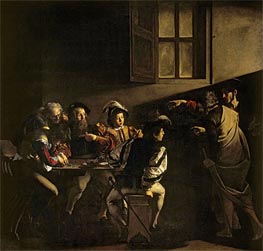
The Calling of Saint Matthew 1599
Oil Painting
$6755
$6755
Canvas Print
$98.86
$98.86
SKU: CMM-4033
Michelangelo Merisi da Caravaggio
Original Size: 328 x 348 cm
San Luigi dei Francesi, Rome, Italy
Michelangelo Merisi da Caravaggio
Original Size: 328 x 348 cm
San Luigi dei Francesi, Rome, Italy
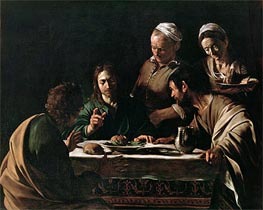
Supper at Emmaus 1606
Oil Painting
$4280
$4280
Canvas Print
$74.87
$74.87
SKU: CMM-6891
Michelangelo Merisi da Caravaggio
Original Size: 141 x 175 cm
Pinacoteca di Brera, Milan, Italy
Michelangelo Merisi da Caravaggio
Original Size: 141 x 175 cm
Pinacoteca di Brera, Milan, Italy
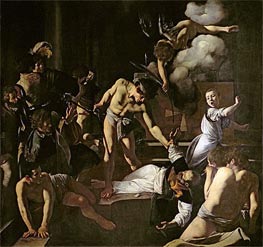
The Martyrdom of St. Matthew c.1599/00
Oil Painting
$12215
$12215
Canvas Print
$98.70
$98.70
SKU: CMM-10498
Michelangelo Merisi da Caravaggio
Original Size: 328 x 348 cm
San Luigi dei Francesi, Rome, Italy
Michelangelo Merisi da Caravaggio
Original Size: 328 x 348 cm
San Luigi dei Francesi, Rome, Italy
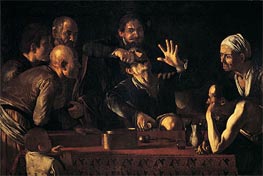
The Tooth Extraction c.1610
Oil Painting
$7127
$7127
Canvas Print
$62.27
$62.27
SKU: CMM-10499
Michelangelo Merisi da Caravaggio
Original Size: 139.5 x 194.5 cm
Galleria degli Uffizi, Florence, Italy
Michelangelo Merisi da Caravaggio
Original Size: 139.5 x 194.5 cm
Galleria degli Uffizi, Florence, Italy
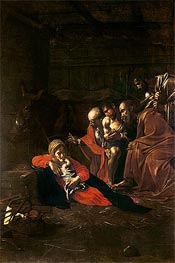
Adoration of the Shepherds 1609
Oil Painting
$6336
$6336
Canvas Print
$62.45
$62.45
SKU: CMM-10555
Michelangelo Merisi da Caravaggio
Original Size: 314 x 211 cm
Museo Nazionale, Messina, Italy
Michelangelo Merisi da Caravaggio
Original Size: 314 x 211 cm
Museo Nazionale, Messina, Italy
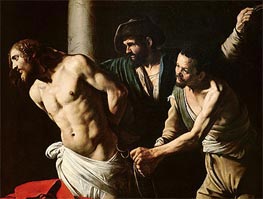
The Flagellation of Christ c.1605/07
Oil Painting
$4122
$4122
Canvas Print
$61.75
$61.75
SKU: CMM-10940
Michelangelo Merisi da Caravaggio
Original Size: 134 x 175.5 cm
Musee des Beaux-Arts, Rouen, France
Michelangelo Merisi da Caravaggio
Original Size: 134 x 175.5 cm
Musee des Beaux-Arts, Rouen, France
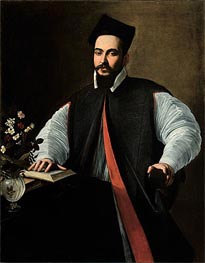
Portrait of Maffeo Barberini n.d.
Oil Painting
$3089
$3089
Canvas Print
$72.83
$72.83
SKU: CMM-10941
Michelangelo Merisi da Caravaggio
Original Size: unknown
Private Collection
Michelangelo Merisi da Caravaggio
Original Size: unknown
Private Collection
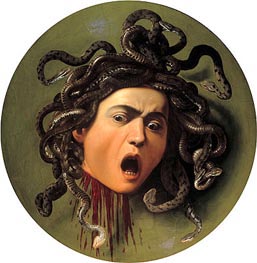
Head of Medusa c.1596/98
Oil Painting
$2600
$2600
Canvas Print
$93.59
$93.59
SKU: CMM-10942
Michelangelo Merisi da Caravaggio
Original Size: 55 x 55 cm
Galleria degli Uffizi, Florence, Italy
Michelangelo Merisi da Caravaggio
Original Size: 55 x 55 cm
Galleria degli Uffizi, Florence, Italy
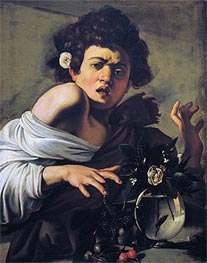
Boy Bitten by a Lizard c.1595/00
Oil Painting
$2646
$2646
Canvas Print
$106.47
$106.47
SKU: CMM-10943
Michelangelo Merisi da Caravaggio
Original Size: 65.8 x 52.3 cm
Private Collection
Michelangelo Merisi da Caravaggio
Original Size: 65.8 x 52.3 cm
Private Collection
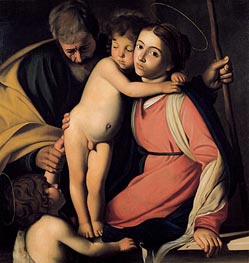
The Holy Family with Saint John the Baptist n.d.
Oil Painting
$3819
$3819
Canvas Print
$108.71
$108.71
SKU: CMM-10944
Michelangelo Merisi da Caravaggio
Original Size: 95 x 90 cm
Musee des Beaux Arts, Tours, France
Michelangelo Merisi da Caravaggio
Original Size: 95 x 90 cm
Musee des Beaux Arts, Tours, France
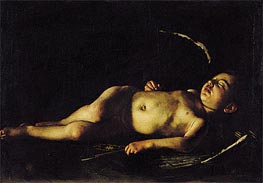
Sleeping Cupid 1608
Oil Painting
$2227
$2227
Canvas Print
$105.44
$105.44
SKU: CMM-10945
Michelangelo Merisi da Caravaggio
Original Size: 72 x 105 cm
Palazzo Pitti, Florence, Italy
Michelangelo Merisi da Caravaggio
Original Size: 72 x 105 cm
Palazzo Pitti, Florence, Italy
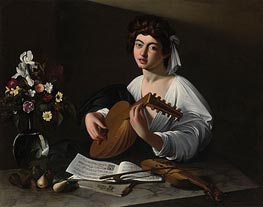
The Lute Player n.d.
Oil Painting
$3812
$3812
Canvas Print
$73.68
$73.68
SKU: CMM-10946
Michelangelo Merisi da Caravaggio
Original Size: unknown
Private Collection
Michelangelo Merisi da Caravaggio
Original Size: unknown
Private Collection
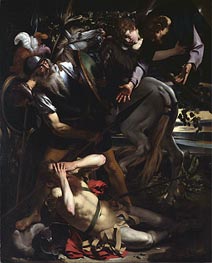
The Conversion of St. Paul c.1600/01
Oil Painting
$8801
$8801
Canvas Print
$74.87
$74.87
SKU: CMM-10947
Michelangelo Merisi da Caravaggio
Original Size: 237 x 189 cm
Private Collection
Michelangelo Merisi da Caravaggio
Original Size: 237 x 189 cm
Private Collection
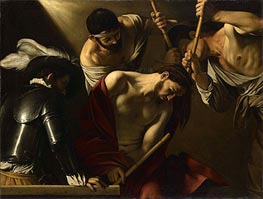
Crowning with Thorns c.1606
Oil Painting
$4103
$4103
Canvas Print
$71.80
$71.80
SKU: CMM-10948
Michelangelo Merisi da Caravaggio
Original Size: 127 x 165.5 cm
Kunsthistorisches Museum, Vienna, Austria
Michelangelo Merisi da Caravaggio
Original Size: 127 x 165.5 cm
Kunsthistorisches Museum, Vienna, Austria
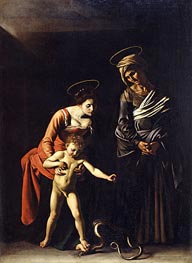
Madonna and Child with a Serpent 1605
Oil Painting
$4320
$4320
Canvas Print
$68.24
$68.24
SKU: CMM-10949
Michelangelo Merisi da Caravaggio
Original Size: 292 x 211 cm
Galleria Borghese, Rome, Italy
Michelangelo Merisi da Caravaggio
Original Size: 292 x 211 cm
Galleria Borghese, Rome, Italy
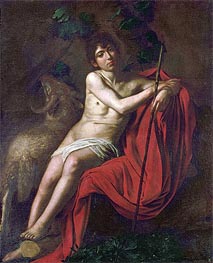
St. John the Baptist in the Wilderness c.1610
Oil Painting
$3352
$3352
Canvas Print
$125.43
$125.43
SKU: CMM-10950
Michelangelo Merisi da Caravaggio
Original Size: 159 x 124 cm
Galleria Borghese, Rome, Italy
Michelangelo Merisi da Caravaggio
Original Size: 159 x 124 cm
Galleria Borghese, Rome, Italy
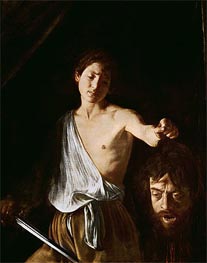
David with the Head of Goliath 1606
Oil Painting
$3377
$3377
Canvas Print
$72.83
$72.83
SKU: CMM-10951
Michelangelo Merisi da Caravaggio
Original Size: 125 x 101 cm
Galleria Borghese, Rome, Italy
Michelangelo Merisi da Caravaggio
Original Size: 125 x 101 cm
Galleria Borghese, Rome, Italy
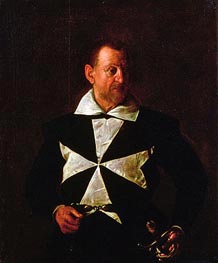
Portrait of Alof de Wignacourt 1608
Oil Painting
$2245
$2245
Canvas Print
$77.09
$77.09
SKU: CMM-10952
Michelangelo Merisi da Caravaggio
Original Size: 118.5 x 95.5 cm
Palazzo Pitti, Florence, Italy
Michelangelo Merisi da Caravaggio
Original Size: 118.5 x 95.5 cm
Palazzo Pitti, Florence, Italy